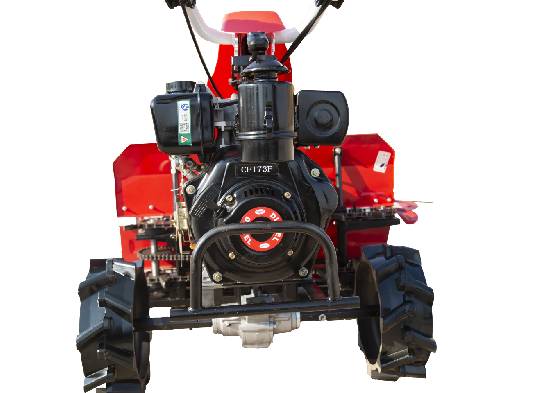windrower machine
The Evolution and Importance of Windrower Machines in Agriculture
In modern agriculture, the efficiency and effectiveness of harvesting processes are paramount to the success of any farming operation. Among the various machines that have revolutionized the way crops are harvested, the windrower stands out as a critical player. A windrower, also known as a swather, is a specialized agricultural machine designed to cut, lift, and lay crops in rows or windrows, facilitating the drying and subsequent harvest of crops such as hay and small grains. This article explores the evolution, functionality, and importance of windrower machines in contemporary farming.
The Historical Context
The concept of cutting and collecting crops is not new. Traditionally, farmers relied on manual labor and simple tools like sickles and scythes to harvest their fields. However, the industrial revolution marked the beginning of mechanization in agriculture, leading to the development of more sophisticated machinery. The first windrowers were invented in the early 20th century, utilizing horse-drawn implements. Over the decades, advancements in technology led to the introduction of motorized windrowers, greatly increasing their efficiency.
How Windrowers Work
Modern windrowers are equipped with a range of features that enhance their capability. They typically utilize a cutting mechanism—such as a sickle bar or disc cutter—to shear the crop at the base. Once cut, the windrower lifts the plants and spews them onto the ground in evenly spaced rows. The design of the machine allows for specific adjustments to accommodate different crop types and terrains, making it versatile for various agricultural needs.
Most windrowers feature cutting widths ranging from 10 to 30 feet, allowing farmers to cover large areas quickly. Additionally, many models come with advanced technology, such as GPS and digital displays, to enhance accuracy and efficiency. This level of technology provides farmers with real-time data regarding their harvesting operations, helping them to make better-informed decisions that can lead to improved yield and reduced wasted resources.
windrower machine

The Benefits of Using Windrowers
The primary advantage of using windrowers in agriculture is the significant reduction in labor and time associated with harvesting crops. By cutting and laying crops in windrows, farmers can facilitate quicker drying times, which is crucial for crops like hay, where moisture levels directly affect quality. Moreover, windrowers help prevent the loss of valuable nutrients by minimizing the amount of time crops spend on the ground before being collected.
Another benefit is the enhancement of soil health. Windrowers allow for a better management of crop residues, which, when left on the soil, can contribute to long-term soil fertility and structure. This practice not only helps in retaining moisture but also encourages beneficial microbial activity, creating a more sustainable farming system.
Environmental Considerations
The importance of sustainability in agriculture cannot be overstated. Windrowers contribute to this effort by minimizing soil compaction. Unlike heavier harvesting machinery, windrowers are generally lighter, resulting in less disturbance to the soil. This quality is crucial in preserving soil health and preventing erosion, which is increasingly important in light of climate change and environmental degradation.
Conclusion
As the agricultural landscape continues to evolve, windrower machines will likely become even more integral to efficient farming operations. Their role in enhancing productivity, reducing labor costs, and promoting sustainable practices highlights their significance in modern agriculture. As farmers increasingly turn to technology to address challenges in crop management and harvesting, windrowers are an indispensable tool that combines tradition with modern ingenuity. In the quest for higher yields and better resource management, the windrower stands as a testament to the innovative spirit of the agricultural community.
Latest news
-
Mini Combine Harvester for Soybean | Compact & Efficient Soybean Harvesting SolutionsNewsNov.24,2025
-
Mini Combine Harvester for Paddy – Compact, Efficient Rice Harvesting SolutionsNewsNov.24,2025
-
Mini Chain Harvester: Compact Forestry Solutions for Sustainable LoggingNewsNov.23,2025
-
Kartar Mini Harvester – Compact, Efficient Harvesting Machinery for Small FarmsNewsNov.23,2025
-
Compact Power: Elevate Your Farming with Harvesting Machine SmallNewsNov.22,2025
-
Discover the Power and Potential of Harvester Mini Combine Machines | Efficient Small-Scale HarvestingNewsNov.22,2025








